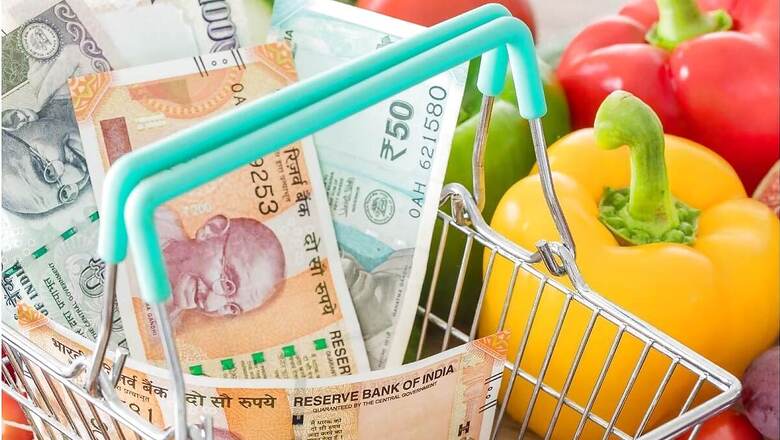
views
Retail inflation in rural areas stood at 5.12 per cent in October, while that in the urban regions at 4.62 per cent.
Despite concerted efforts by the RBI and government to rein in inflation, rising costs, particularly for food, have kept the overall numbers under pressure.
The 4% retail inflation target continues to beckon, but October 2023 marked a turning point. For the second consecutive month, CPI inflation dipped within the RBI’s upper tolerance limit of 6%, offering a flicker of hope on the long road to price stability.
The October retail inflation eased mainly due to cooling prices of food items. The Monetary Policy Committee (MPC), in its October meeting, projected CPI inflation at 5.4 per cent for 2023-24, a moderation from 6.7 per cent in 2022-23.
As the year 2023 is ending in a couple of weeks, many wonder how inflation is going to impact in 2024. Will it go down further or is there any chance when RBI hits the rate increase button?
While the slower pace of price rises will give some comfort to the RBI, its mandate to anchor inflation to the 4% mid-point target is still some distance away.
Outlook 2024
Indranil Pan, chief economist, Yes Bank, said that due to high headline inflation, the purchasing power of the middle class is already diminishing. With food forming a critical element within the consumption basket, and given that food in India has a large weight in overall inflation calculation, this forms a double whammy for the middle class population.
“Food inflation will indeed have to be watched, given global climate changes, El Nino led crop damages, and domestic seasonal spikes in certain agricultural commodities,” Pan added.
Radhika Rao, senior economist at DBS Bank, said, “Inflation is expected to have a choppy ride in the months ahead. Passage of base effects and a sharper rise in selected vegetable prices are likely to take the headline back above 5% this quarter and keep in that territory into 1Q24.”
She added that the central bank has opted to be cautious on the inflation outlook…(and) will be more inclined to extend its pause for the time being before venturing out to consider a change in stance as a precursor to a change in the policy direction.
Food price factor
Pan highlighted that in India, there is a large difference between the farm gate and the food plate prices. Given that the farmers in India are predominantly small, higher food prices tend to affect their budgets negatively than positively.
“With food taking away a large portion of the budget, the middle class population will generally have to reallocate their expenditures away from the non-essential (also read discretionary) spending and direct it towards the consumption of food,” Pan said.
Pan also pointed out that high food prices, thus, reduce the demand for non-essential items.
High inflation would also mean that the RBI will not be able to cut its repo rate soon, implying that EMIs of people who have availed loans is unlikely to gain any comfort on the EMIs. High inflation also has its impact on the real income of people, Pan highlighted.
RBI Governor Shaktikanta Das-headed MPC is scheduled to begin its three-day deliberations on December 6. Das would unveil the decision of the six-member MPC on December 8 morning.
The RBI had last increased the repo rate In February to 6.5 per cent, thus ending the interest rate hiking spree which began in May 2022 in the aftermath of Russia-Ukraine war and subsequent disruptions in the global supply chain resulting in high inflation in the country.




















Comments
0 comment